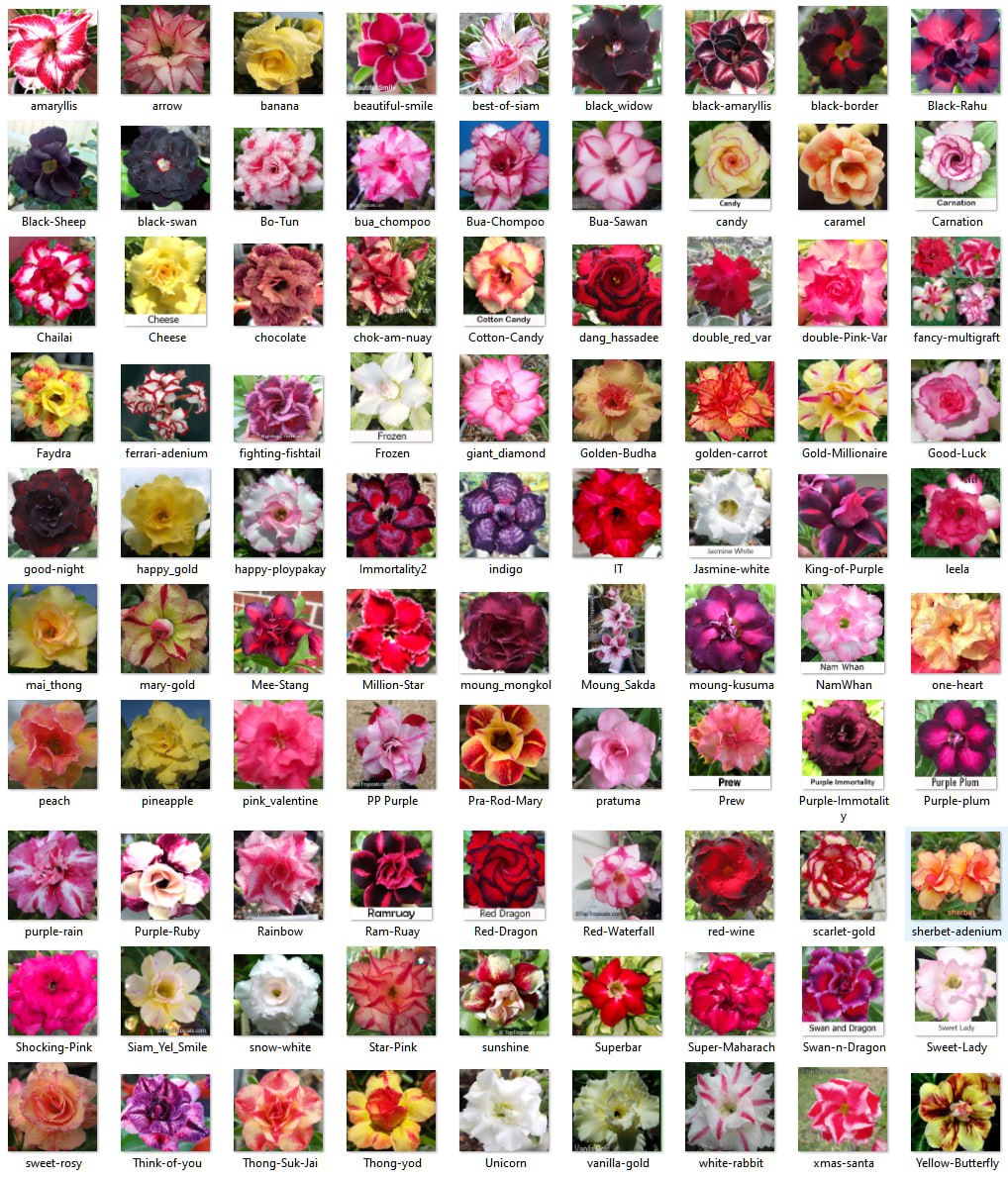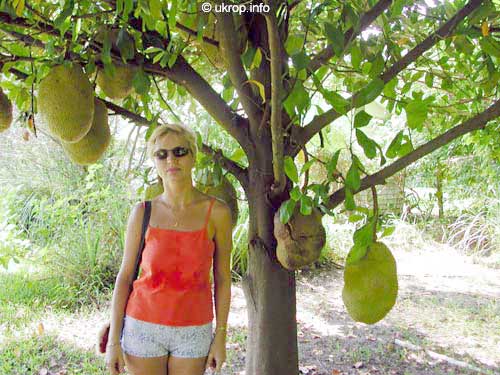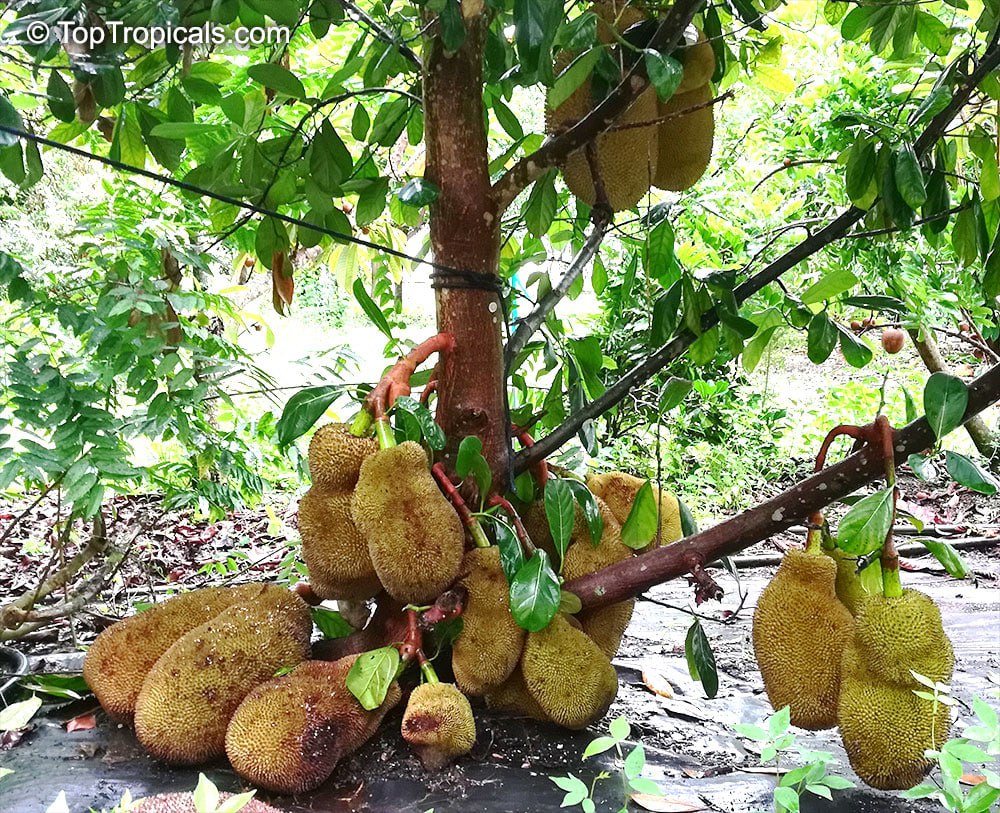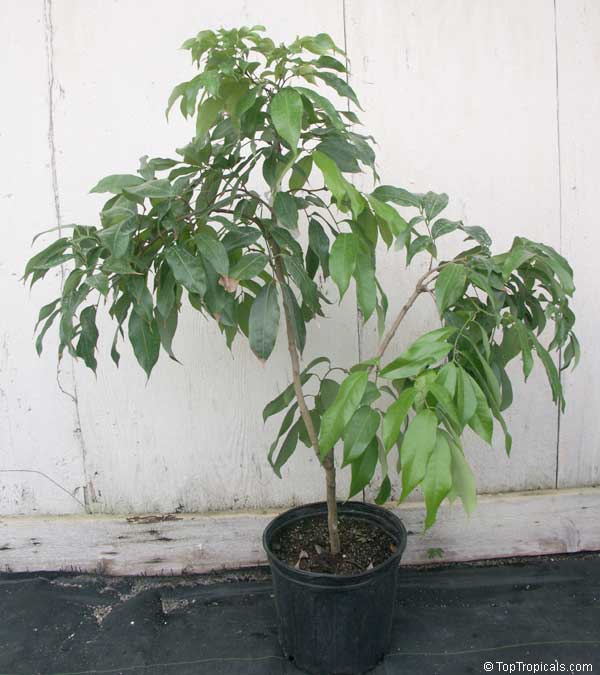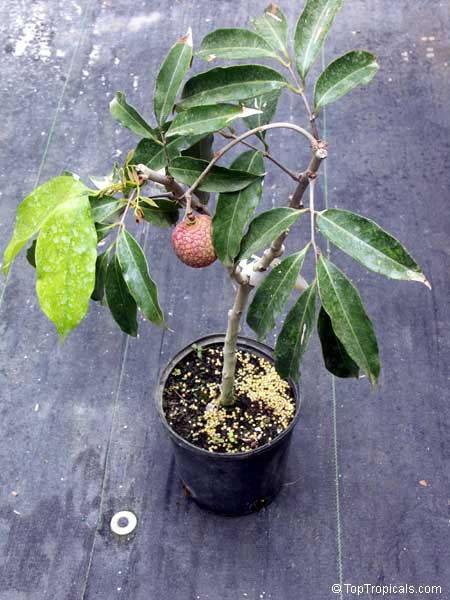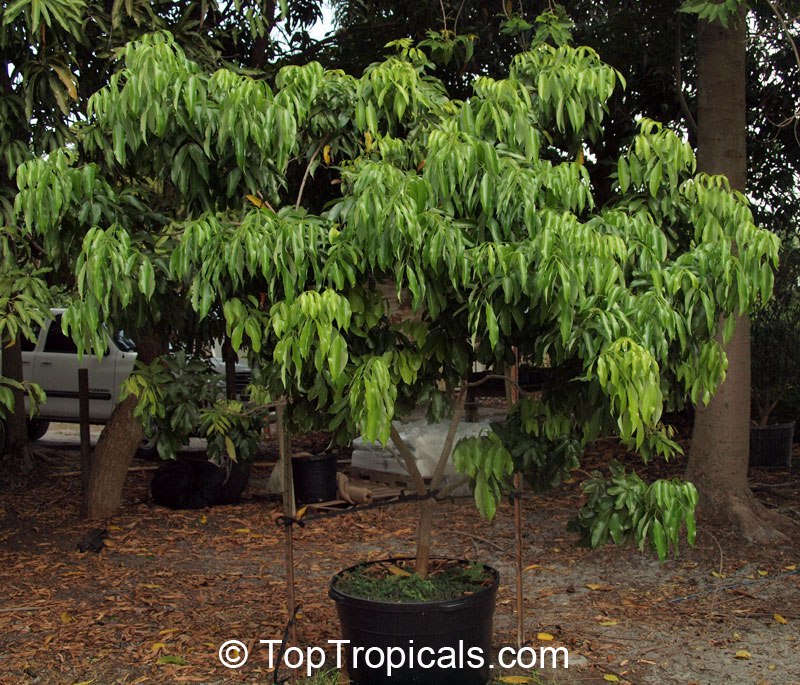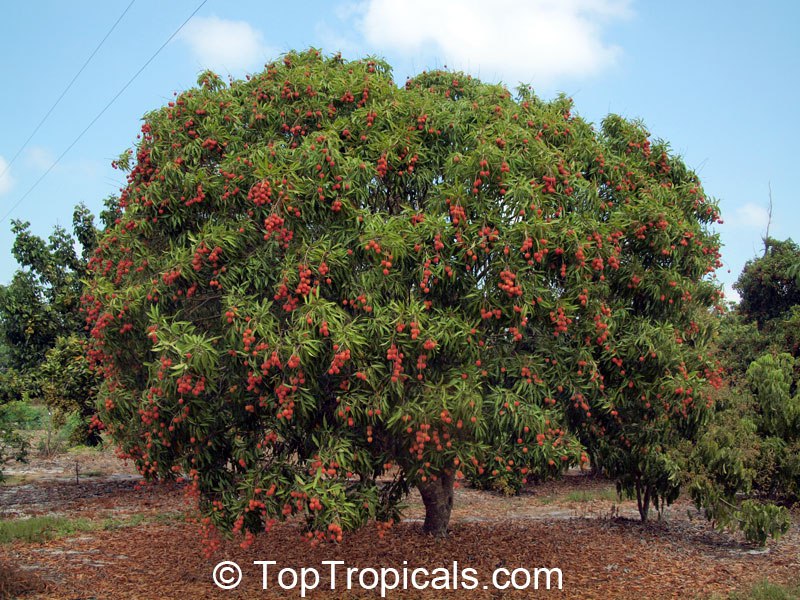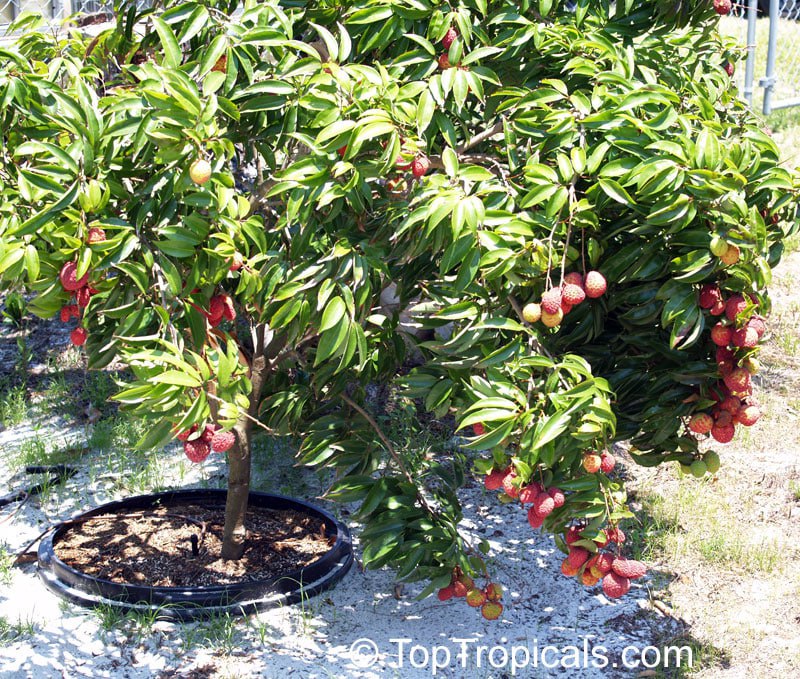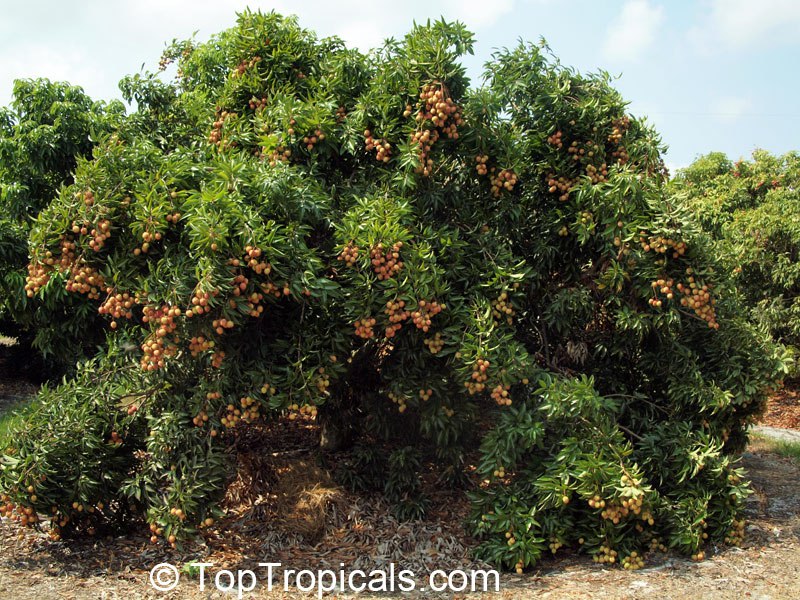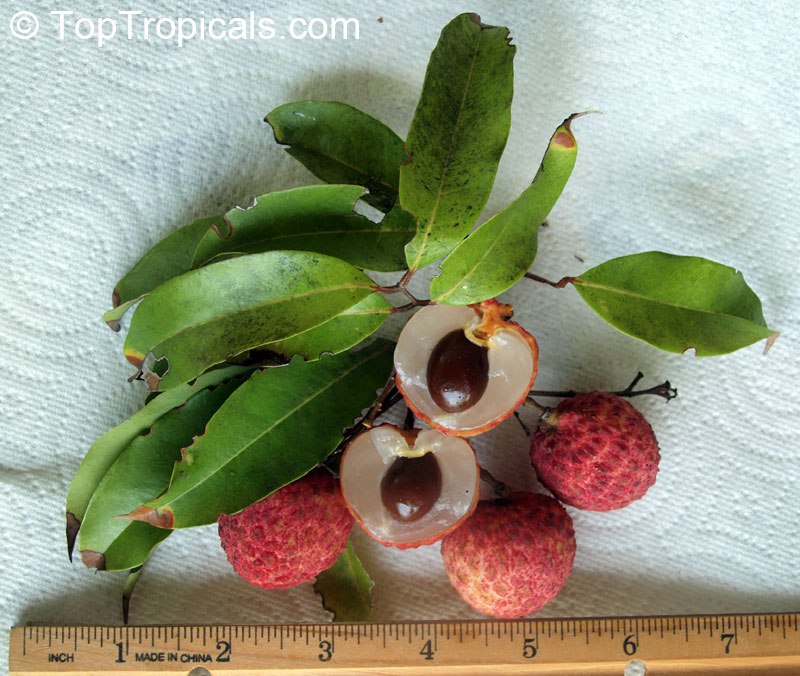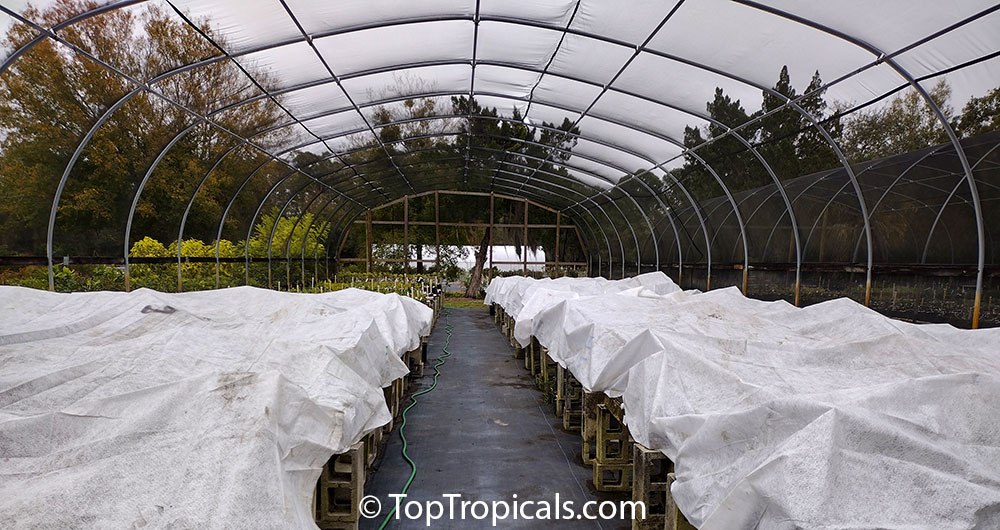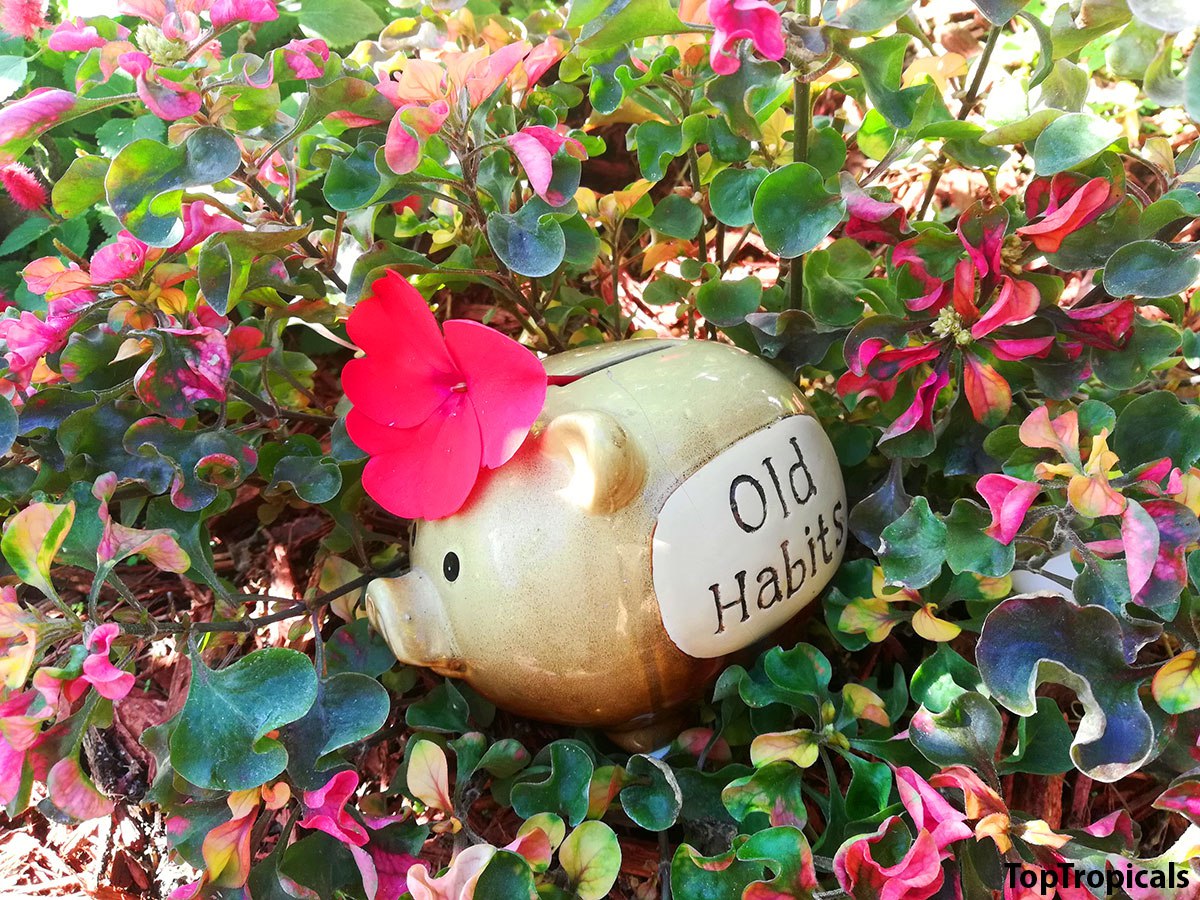Garden Blog - Top Tropicals
What Fertilizer to Use Now and How?
Part 1. What are important keys to healthy plants
❓ Q: It's early Spring this year. Should I start fertilizing my plants sooner than usual?
- ✔️ A: Most fertilizer instructions recommend fertilizing tropical plants from March to November. This is because plants don't need as much food during the cooler months when many go dormant, and excess nutrients can burn the roots if not absorbed. However, for the most effective fertilizer program and healthy plants, consider these points:
- ✔️ Sunshine Boosters Year-Round
- ✔️ Dry Fertilizer Schedule
- ✔️ Temperature Is Key
- ✔️ What Fertilizers to Use and How
Liquid amino-acid-based fertilizers like Sunshine Boosters are safe to use year-round. Since watering is reduced in cooler weather, the intake of water-soluble fertilizer is also lower, providing plants with just the essential nutrients for their minimal needs.
Be cautious with dry fertilizers. Apply them only during active growth in the hot season.
If March is still cold, delay dry fertilizer use. However, if nighttime temperatures in February stay above 65F, you can start a dry fertilizer program using slow-release, granulated plant food.
Check out our Sunshine Boosters selection for different types of plants and choose the right type for your needs. These can be applied as often as with every watering. We will explain in details about every type of fertilizer in our next post🔽
🛍 Shop Sunshine Boosters
#Fertilizers #How_to
🔴 Join 👉 TopTropicals
Why Adeniums are the most popular container plants
- 🌸
· Easy to grow and can thrive in both sun and shade, indoors, and in low humidity.
- · Drought-tolerant, requiring minimal water and able to go long periods without it.
- · Not fussy about soil pH.
- · Stunning bloomers with showy flowers.
- · Unique and eye-catching, with a curious caudex that forms unusual shapes.
- 🌸 How many varieties and colors of desert roses out there?
· At Top Tropicals, we offer over 200 varieties of Adeniums, with more than 100 available in stock at any time.
- · With so many colors of hybrids available in cultivation, you want to collect them all!
- · Double flowers, red, purple, yellow, striped, dotted, rainbow, and even black flowers!
🌸 The secret to creating a large, swollen caudex:
Raise the plant slightly every time you repot it, exposing the upper part of the roots. This encourages the plant to form more roots that grow downward.
Unlike most tropical and houseplants, Adeniums prefer neutral to hard water. They have very low water needs and can grow in full sun or shade.
📸 In the photo: Selected Adenium hybrids currently available from TopTropicals
📚 More about Adeniums:
How to grow a happy Adenium
What is the easiest container plant with beautiful flowers
Multi-grafted Adenium with different colors of flowers on the same plant
What you need for successful growing Adeniums
🛍 Shop Adenium colors and hybrids
#Container_Garden #How_to #Shade_Garden #Adenium
🔴 Join 👉 TopTropicals
Over 100 new Adenium varieties just arrived!
Potted Desert roses - Adeniums
🆕 We received a THOUSAND NEW ADENIUMS from Thailand - beautiful, well-developed plants with big caudexes, ready to bloom!
They are finally available for those on the waiting list for specific colors.
🔥 But hurry! Each variety is available in limited quantities (under 10 plants), and they will go fast - first come, first served!
✔️ Check out our online store to see the available colors, and don’t miss our next post for pictures of selected varieties! ⬇️
🛍 Shop Adenium colors and hybrids
#Container_Garden #How_to #Shade_Garden
🔴 Join 👉 TopTropicals
If you want to grow your own vanilla orchid, this is how to plant it
Vanilla Bean Orchid (Vanilla planifolia) growing in pots
- ⚡️ The Vanilla Bean Orchid (Vanilla planifolia) is a source of Vanilla extract. If you're interested in growing your own Vanilla , here's how to get started:
- ⚡️ Begin by planting your young Vanilla Bean Orchid in a pot using regular potting soil, accompanied by a small trellis for support.
- ⚡️ Initially, the plant will establish itself in the pot, but as it matures, it develops aerial roots and gradually becomes more epiphytic, relying on support structures rather than the soil.
- ⚡️ As your orchid grows, it will require a larger trellis, a log, or a burlap-covered board to facilitate its natural climbing behavior.
- ⚡️ Once the plant is well-established and its aerial roots have developed on the support surface, it will be ready to flower and produce vanilla beans. This setup mimics the orchid's natural environment and supports its growth and fruiting process.
📚 Learn more from previous posts:
How to grow your own vanilla orchid at home
The Secret of how to Make Vanilla Orchid bloom
🛒 Shop Vanilla Bean Orchids
#Shade_Garden #How_to #Container_garden
🔴 Join 👉 TopTropicals
How to grow Mandevilla: Practical Guide to Growing Mandevilla Vine
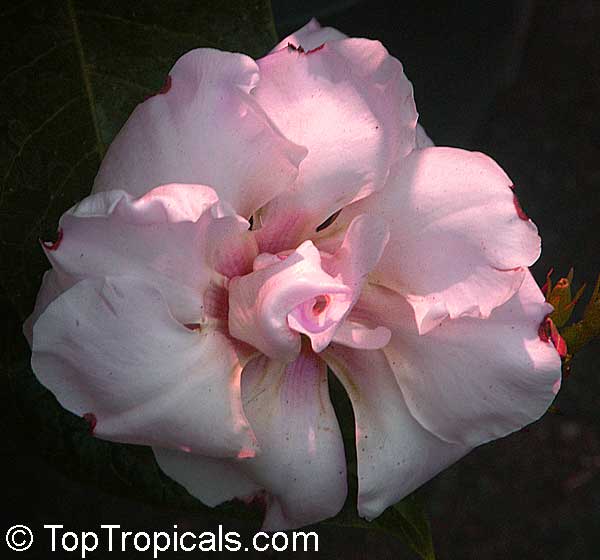
Mandevilla amabilis Thai Rose
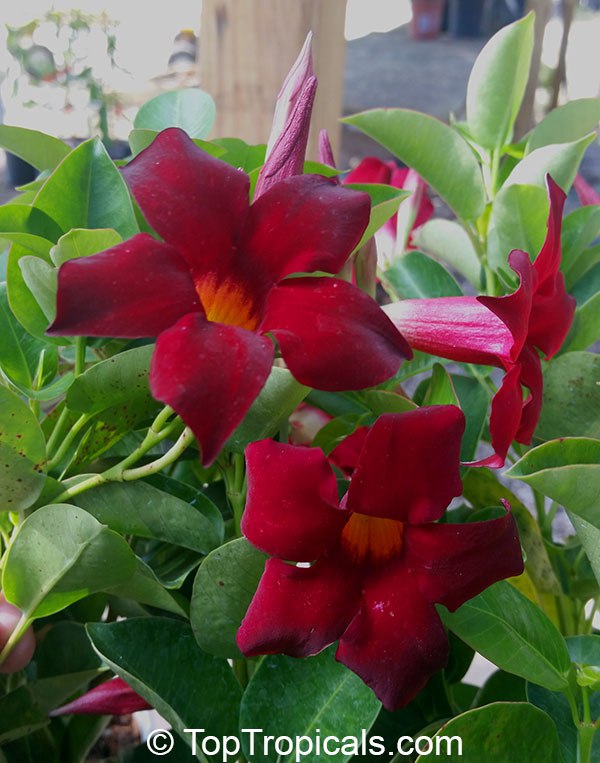
Mandevilla Sun Parasol Crimson
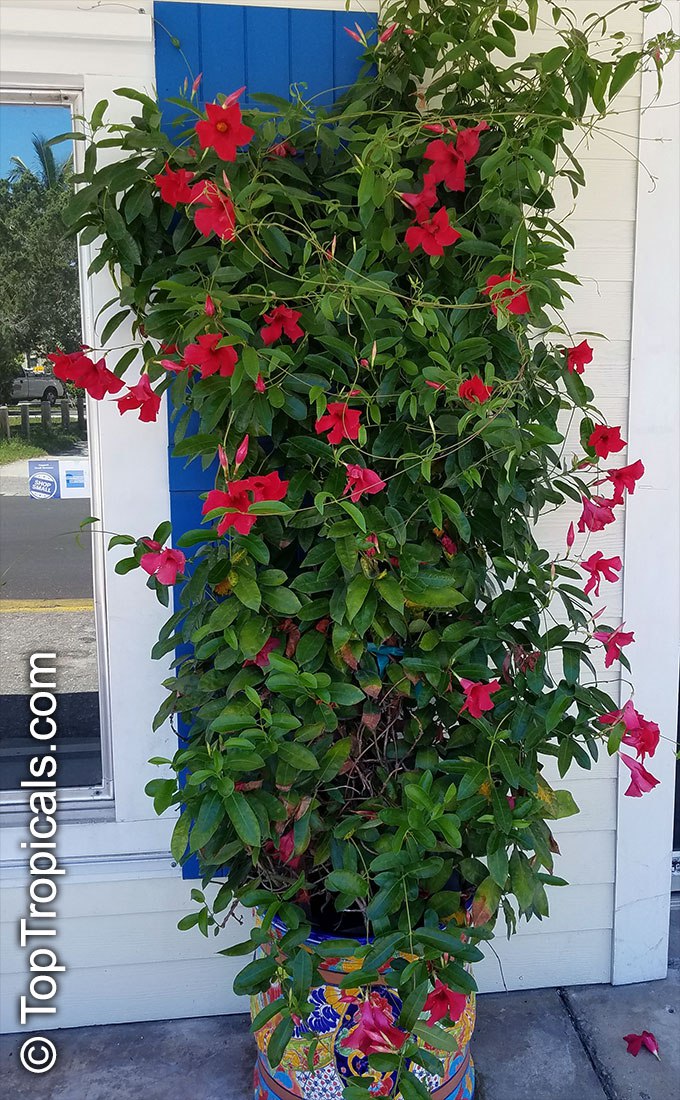
Mandevilla Sun Parasol Crimson on a trellis

Mandevilla amabilis Thai Rose
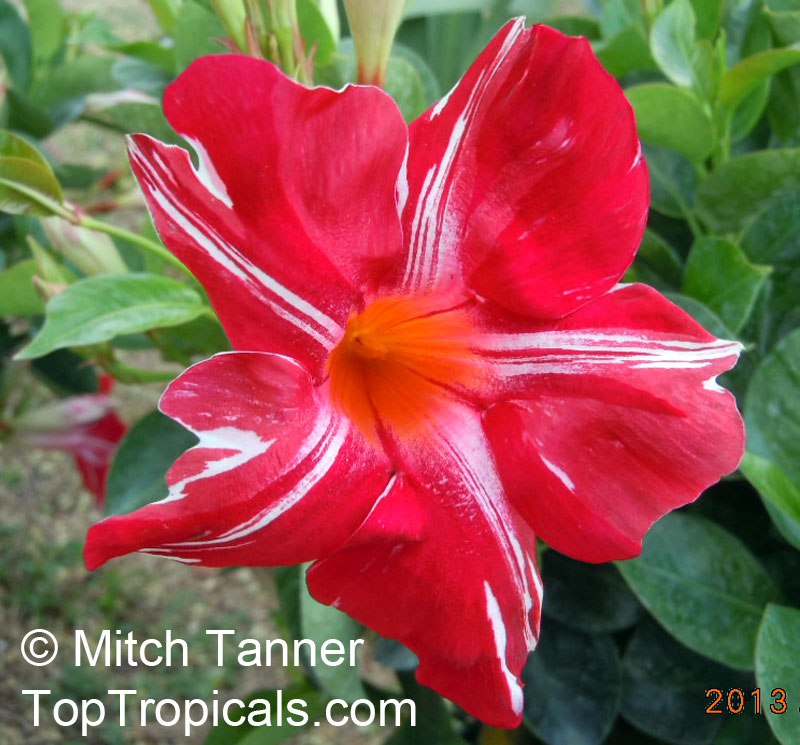
Mandevilla Stars and Stripes
- 🌺 Mandevilla is a tropical vine known for its vibrant, trumpet-shaped flowers that bloom throughout the warm months. This fast-growing climber thrives in warm climates and adds a stunning display of color to gardens and patios.
- 🌺 Difference Between Mandevilla and Dipladenia
- 🌺 Growing in the Ground
The names Mandevilla and Dipladenia are often used interchangeably, creating confusion. While they are closely related, there are key differences. Mandevilla is a vigorous woody vine with large, stiff leaves, ideal for trellises and fences. Dipladenia, on the other hand, has a more compact growth habit with smaller, smooth leaves. Dipladenia can be also trained on a trellis but also thrives in hanging baskets or as a compact specimen plant. As a bushier type of Mandevilla, its smaller, more compact varieties are excellent for mixed containers.
💋Soil. Mandevilla prefers well-draining soil enriched with organic matter. A mix of garden soil, compost, and sand ensures good drainage and fertility. Both Mandevilla and Dipladenia require acidic soil. If your native soil contains limestone, consider growing them in containers with a peat-based potting mix to maintain a lower pH.
- 💋Light. Plant in a location with full sun to partial shade; at least 6 hours of direct sunlight promotes the best blooms.
- 💋Feeding and Encouraging More Blooms: Feed Mandevilla with Sunshine Boosters Megaflor with every watering to encourage more blooms. Prune lightly after flowering to promote new growth and continuous flowering.
Water Mandevilla regularly, keeping the soil moist but not soggy. During hot months, water deeply a few times a week. Reduce watering in cooler seasons.
- 🌺 Most Interesting Varieties
Mandevilla flowers come in a wide range of colors, including shades of red, mauve, pink, white, and even yellow. For vibrant color and impact, consider these varieties:
💋Mandevilla ‘Alice du Pont’– A classic pink variety with large flowers and vigorous growth.
- 💋Mandevilla ‘Sun Parasol’ Series – Offers compact plants in deep red, pink, or white, great for containers or small spaces.
- 💋Mandevilla ‘Crimson Red’– Deep red blooms stand out against glossy green foliage.
- 💋Dipladenia ‘Stars and Stripes’ - features striking red-and-white striped blooms.
In Florida, Sun Parasol and Alice du Pont perform exceptionally well, thriving in the heat and humidity while providing season-long blooms.
- 🌺 Pests and Problems
Mandevilla is relatively pest-resistant but can attract aphids, spider mites, and whiteflies. To manage pests:
💋Spray with a neem oil solution weekly if pests are present.
- 💋Encourage beneficial insects like ladybugs to control aphids naturally.
- 💋Remove affected leaves and rinse plants with a strong stream of water.
- 💋Watch for fungal diseases in humid climates; ensure good air circulation and avoid overhead watering.
🌺 Growing Mandevilla in Pots and Winter Care
Mandevilla grows beautifully in containers, making it a great option for cooler climates where it can be brought indoors for winter.
- 💋Pot Growing Tips:
· Use a well-draining potting mix with added perlite for aeration.
- · Choose a pot at least 12-16 inches in diameter, with several drainage holes, for vigorous growth.
- · Water when the top inch of soil feels dry, avoiding waterlogged conditions.
💋Winter Care:
- · In regions with frost, move potted Mandevilla indoors to a bright, cool location (50-60°F).
- · Reduce watering and stop fertilizing during cooler season.
- · Prune lightly before bringing indoors to maintain shape and size.
- · Repotting: Repot every 2-3 years in early spring before active growth begins, refreshing the soil and upgrading to a slightly larger container if needed.
With the right care, Mandevilla provides stunning, long-lasting blooms and thrives in gardens or pots, making it a versatile and rewarding addition to any space.
📚 Learn more from previous post:
How to overwinter Mandevilla indoors
🛒 Shop flowering vines
#How_to #Container_Garden #Hedges_with_benefits
🔴 Join 👉 TopTropicals

